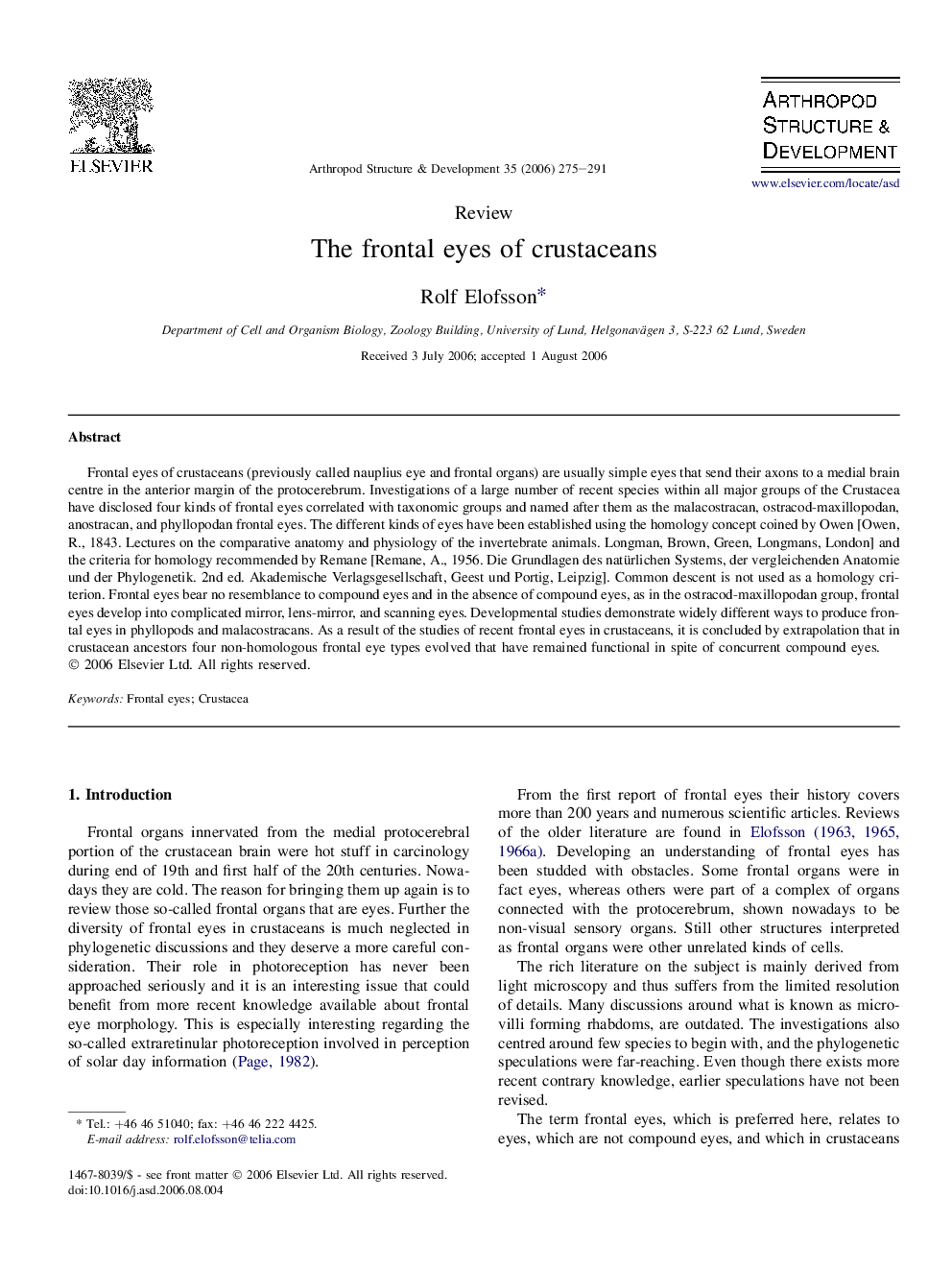| Article ID | Journal | Published Year | Pages | File Type |
|---|---|---|---|---|
| 2779036 | Arthropod Structure & Development | 2006 | 17 Pages |
Frontal eyes of crustaceans (previously called nauplius eye and frontal organs) are usually simple eyes that send their axons to a medial brain centre in the anterior margin of the protocerebrum. Investigations of a large number of recent species within all major groups of the Crustacea have disclosed four kinds of frontal eyes correlated with taxonomic groups and named after them as the malacostracan, ostracod-maxillopodan, anostracan, and phyllopodan frontal eyes. The different kinds of eyes have been established using the homology concept coined by Owen [Owen, R., 1843. Lectures on the comparative anatomy and physiology of the invertebrate animals. Longman, Brown, Green, Longmans, London] and the criteria for homology recommended by Remane [Remane, A., 1956. Die Grundlagen des natürlichen Systems, der vergleichenden Anatomie und der Phylogenetik. 2nd ed. Akademische Verlagsgesellschaft, Geest und Portig, Leipzig]. Common descent is not used as a homology criterion. Frontal eyes bear no resemblance to compound eyes and in the absence of compound eyes, as in the ostracod-maxillopodan group, frontal eyes develop into complicated mirror, lens-mirror, and scanning eyes. Developmental studies demonstrate widely different ways to produce frontal eyes in phyllopods and malacostracans. As a result of the studies of recent frontal eyes in crustaceans, it is concluded by extrapolation that in crustacean ancestors four non-homologous frontal eye types evolved that have remained functional in spite of concurrent compound eyes.
